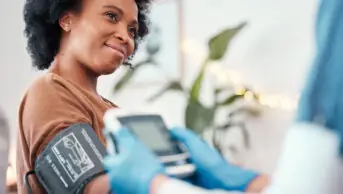
Shutterstock.com
I
t is two decades since scientists at Pfizer hit upon the surprising erectile function of sildenafil while developing a drug to treat hypertension and angina. Since the US Food and Drug Administration (FDA) approved sildenafil as Viagra in 1998, men experiencing sexual dysfunctions, which for many is primarily a physical problem, have had something to help.
On 19 August, the FDA approved Sprout Pharmaceuticals’ Addyi (flibanserin) to treat hypoactive sexual desire disorder (HSDD) in premenopausal women. HSDD is low sexual desire of no obvious cause that produces distress or interpersonal difficulty.
Like sildenafil, Addyi was developed to treat another condition — in this case depression. While it didn’t cut it as an antidepressive in clinical trials, researchers noted that that this drug, a serotonin 1A receptor agonist and a serotonin 2A receptor antagonist, had an impact in one particular area – it improved sex drive.
The drug was rejected by the FDA twice before, and was only approved with certain caveats owing to its potential to cause hypotension and synocope, particularly when combined with alcohol or protease inhibitors.
The approval follows an unprecendented campaign by the industry sponsored group Even the Score. The pressure group claimed a gender disparity in sexual health, arguing that women should have medical treatments for common sexual health issues, just as men do. The group lobbied US Congress, recruited patients with HSDD to attend FDA meetings, and set up a petition calling on the FDA to approve the first ever HSDD medical treatment option.
The prevalence of HSDD among premenopausal women (aged 20–49 years) is around 7%, yet it rises to 9% among menopausal women (aged 50–70 years), suggesting there will be a large demand for the drug among older women although the true demand for the drug is yet to be seen.
The drug appears marginally beneficial in postmenopausal women, and Sprout Pharmaceuticals, based in Raleigh, North Carolina, told The Pharmaceutical Journal that it intends to pursue approval for this age group. But in the meantime, post-menopausal women are likely to seek the drug. US physicians can prescribe drugs off license, but; the FDA could decide to remove it from the market if off-license prescribing leads to many adverse events.
The FDA is concerned about the adverse effects of Addyi. It has made the drug available only through trained physicians and pharmacies, and ordered Sprout to conduct three trials to better understand the risks of the interaction between Addyi and alcohol.
Yet despite these concerns, the FDA has succumbed to pressure, which has its own inherent implications. But it also means that the new “female viagra” is associated with some substantial risks and is not approved for those most likely to experience HSDD. It is doubtful that flibanserin will be a triumph for women’s health in the way that Viagra was for men.


